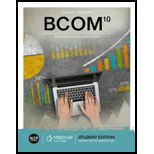
Concept explainers
1.
To add:
Hyphens in the given sentence wherever needed.
Those hyphens are to be deleted which are not needed.
Introduction:
The hyphens are usually used to join two related words based on the meaning of the concerned words.
2.
To add:
Hyphens in the given sentence wherever needed.
Those hyphens are to be deleted which are not needed.
Introduction:
The hyphens are usually used to join two related words based on the meaning of the concerned words.
3.
To add:
Hyphens in the given sentence wherever needed.
Those hyphens are to be deleted which are not needed.
Introduction:
The hyphens are usually used to join two related words based on the meaning of the concerned words.
4.
To add:
Hyphens in the given sentence wherever needed.
Those hyphens are to be deleted which are not needed.
Introduction:
The hyphens are usually used to join two related words based on the meaning of the concerned words.
5.
To add:
Hyphens in the given sentence wherever needed.
Those hyphens are to be deleted which are not needed.
Introduction:
The hyphens are usually used to join two related words based on the meaning of the concerned words.
Want to see the full answer?
Check out a sample textbook solution
- Paxwell Industries uses a standard costing system that allows 3 pounds of direct materials for one finished unit. During November, the company purchased 50,000 pounds of direct materials for $275,000 and manufactured 15,000 finished units. The standard direct materials cost allowed for the units manufactured is $180,000. The performance report shows that Paxwell has an unfavorable direct materials usage variance of $6,000. Also, the company records any price variance for materials at the time of purchase. What was the number of pounds of direct materials used to produce November's output?arrow_forwardKendrick Manufacturing Corp. (KMC) has total assets of $600 million, $80 million of which are cash. It has total debt of $250 million. If KMC repurchases $30 million of its stock, what changes will occur on its balance sheet? What will its new leverage ratio be? Please provide the accurate answer to this financial accounting problem using valid techniques.arrow_forwardNot use ai solution please and accounting questionarrow_forward
- Given the following information: Average Cost per Unit: Direct materials: $12.00 Direct labor: $7.00 Variable manufacturing overhead: $4.00 Fixed manufacturing overhead: $10.00 Fixed selling expense: $6.00 Fixed administrative expense: $5.00 Sales commissions: $4.00 Variable administrative expense: $3.00 Assuming the cost object is units of production, what is the total indirect manufacturing cost incurred to make 40,000 units?arrow_forwardI need help with correct answerarrow_forwardCalculate the cost of goods manufacturedarrow_forward
 Understanding Management (MindTap Course List)ManagementISBN:9781305502215Author:Richard L. Daft, Dorothy MarcicPublisher:Cengage Learning
Understanding Management (MindTap Course List)ManagementISBN:9781305502215Author:Richard L. Daft, Dorothy MarcicPublisher:Cengage Learning

